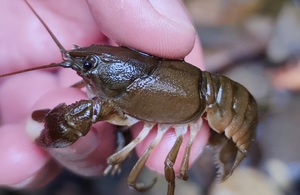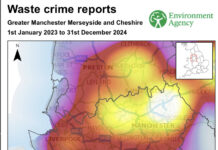A thriving population of native white-clawed crayfish has been rediscovered in a West Yorkshire watercourse providing a boost for the endangered species.
Environment Agency officers and partners in the Reviving Calderdale’s Rivers project made the fantastic find at Luddenden Brook. It’s the first time they have been confirmed in that location for close to a decade.
White-clawed crayfish are the UK’s only native, freshwater crayfish, and are most at risk from the American signal crayfish, which spread a fatal disease and compete for food.
The rare species plays a vital role in keeping our waterways clean and as a source of food for other native species, but have struggled to survive after the more aggressive signal crayfish population has taken hold.
Dan Chadwick, Fisheries Technical Officer from the Environment Agency in Yorkshire, said:
We’re delighted with this discovery. The white-clawed crayfish is in very real danger of disappearing from the UK so to confirm that a population we thought was lost is flourishing is exciting.
We’ll be working with partners including Yorkshire Wildlife Trust, Calderdale Council and Calder Rivers Trust to create better habitats and ensure this rare species can survive and thrive. It gives us real hope that there might be further populations in the Calder river catchment.
The signal crayfish, which originates from America, was introduced in the 1970s. It is bigger, more aggressive and out-competes the native white-clawed crayfish. They also carry a fungal disease known as crayfish plague, which is fatal to the native species. They burrow into banksides, causing increased siltation of watercourses which can smother river beds.
Populations of signal crayfish do exist in the main River Calder, but several weirs on Luddenden Brook isolate and protect the endangered white claw species from them. The Environment Agency is now calling on people to ‘Check, Clean, Dry’ their clothing and equipment after visiting local rivers in the Calder catchment to avoid transferring the invasive species and the crayfish plague into the brook and risking harm to the white claw population.







